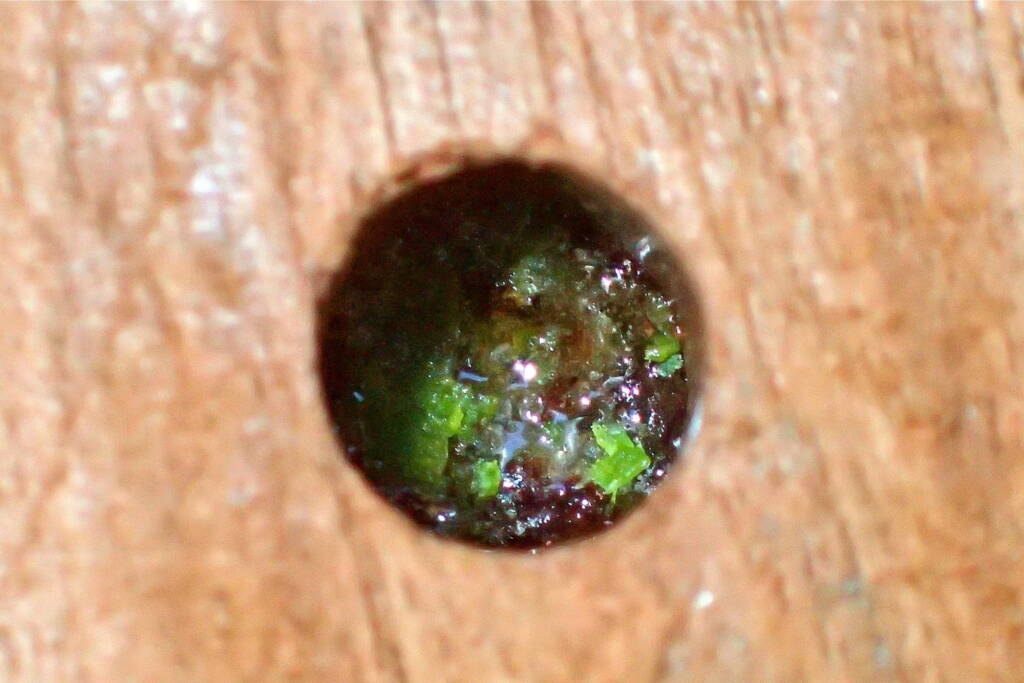Author Gary Taylor ◦
The making of the resin bee’s nesting cap
So, The Art of a “resin bee” making her nursery chamber cap… I’ve used a couple of different species to put this together.
The first two pics are Megachile canifrons ‘cos I love the precision with which she spreads that first ball of gum tree resin around the inside of the tube… You don’t need to be a master plasterer OR a mum on canteen duty to know that’s really well spread, that takes skill… Try getting a mouthful of jam and spreading it that evenly and neatly on a piece of toast fixed to the wall just using your tongue… You’d never be let on canteen duty again… 😆

Anyway, that’s how it starts, a ball of resin she’s collected from a tree, spread perfectly around the inside of her finished nest that she will continue to add sand grains and more resin to, like bricks and mortar, building it up…

* Just a footnote here as I know some of you are very new to this… Within the tube there will be multiple individual nursery chambers (with these larger Megachile each chamber will be at least 2 cm long), each with one egg and a store of pollen and sealed with it’s own resin cap… *
Then (third pic) I swapped to Megachile erythropyga, ‘cos apart from the again incredible precision with which she’s made her resin foundation to build on, or the gorgeous colour in the resin, or that this is one of only a few pics I’ve got where you can see the pollen packed in behind, but ‘cos she’s one of several species that also adds bits of chewed up leaf matter to her resin… sometimes causing confusion as to whether she may be a “leafcutter” bee but nope, she’s a resin bee…

The next few pics show the progression of the resin based cap, the chewed up leaf bits looking like emeralds in the resin… then she adds diamonds and topaz… Hard to see in the small pics, better in full screen, besides you have to click on one of ’em to see the next bit anyway, the best bit… 😄 She then hides all the jewels behind big slabs of chewed up leaf and chunks of wood (drillings 😃) and covers it all with leaf pulp which she works in with her mandibles (I reckon she’s also adding secretions from her mouth to help it bind…).
And last pic, no rest for these hard working girls, as soon as she’s done she’s up and starting on a new nest… She’ll work her guts out from dawn to dusk every day, collecting pollen, stocking her nurseries, collecting resin and building materials to seal each chamber… she’s only got about 28 days to live her adult life, she’s doing it all on her own, and she’s gonna do her damned best to make sure her kids have a good strong start… 🙂

Another footnote, from what I’ve seen, she can produce “around” (I didn’t see them all emerge) 20 offspring.
Geraldton, Midwest WA







